
views
Waiting for a parking space

Use your turn signals/indicators. Signalling your intentions to others when reaching a desired parking space will reduce unnecessary confusion in the car park. It is often assumed that when two cars reach a parking spot at the same time from opposite directions, the one that turns their indicator on first, claims the spot.
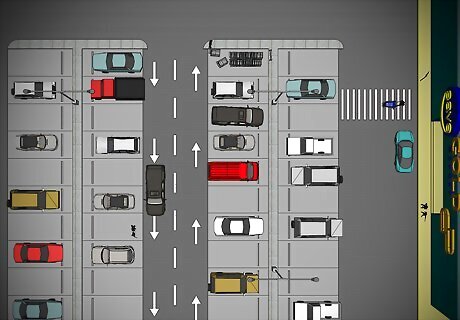
Park only in designated spaces. Parking along the curb, with the exception of loading zones, or for loading a heavy item or helping a less mobile individual with their load is annoying and often dangerous.
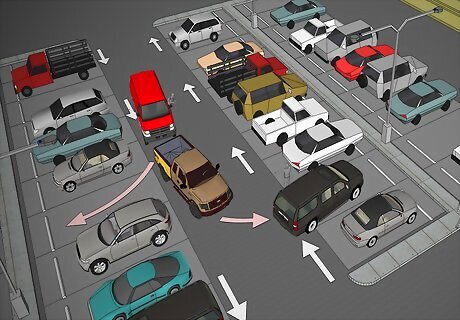
Do not block other road users while you wait for a space to open up near the store entrance. The drivers in the cars behind you may be finished with their errands, and are ready to head for work or home. If the person is already pulling out, that's one thing. But if you're sitting there while they walk to the car, waiting while they put their bags in the car, etc. you'll be trying the patience of every other car behind you, especially if they can't go past you.
Parking accurately in car spaces
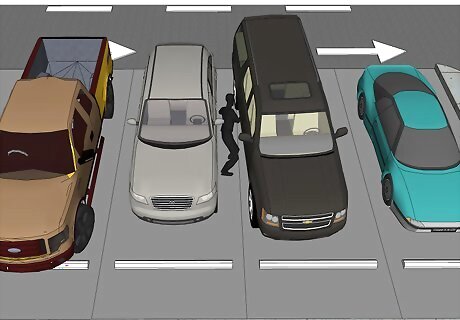
Position your vehicle in the centre of the parking space. Parking over the stripes will be inconvenient to the driver in the adjacent space, and can lead to doors getting unnecessarily scraped or dented. Know how to Park a Truck or Large Vehicle neatly if you have one, or if your vehicle is large in relation to your local parking spaces because they are too small.Use Parking Lot Etiquette Step 3Bullet1.jpg
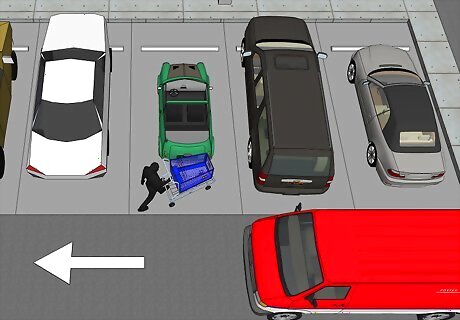
Pull your vehicle all the way into the space. This makes it easier for other drivers to see past your car when they are backing out of adjacent spaces, and also gives the widest possible driving lane between spaces. This can be particularly helpful when shoppers pushing loaded shopping carts are sharing the driving lane with moving vehicles. The exception would be a very small compact or sub-compact vehicle. With small cars such as a Mini Cooper or a Smart car, parking so that the back end of your car is equal with the cars beside you lets drivers know that the space is occupied and does not give the false impression that the parking spot is vacant.
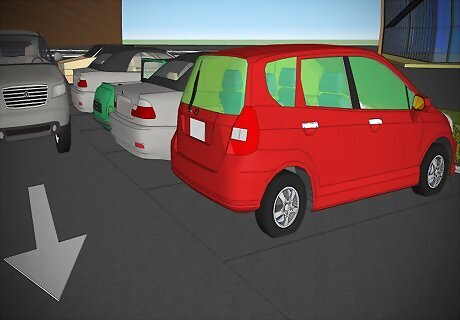
Don't pull too far forward If you drive a small car (Honda Fit, Smart ForTwo, Kia Rio, etc.) do not pull so far forward that your car cannot be seen as a person drives down the lane, looking for a spot. Pull into the spot, out of the lane of traffic, but not so far that your car is unable to be seen from the lane. You may be saving yourself damage from someone who sees the "open" space and pulls in a BIT too quickly.
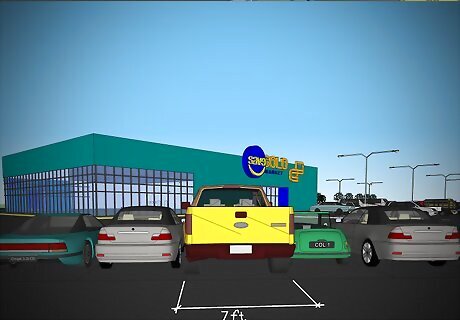
Never force your car into a space. In crowded, busy parking lots, special compact car spaces are becoming more common. Standard parking spaces are generally 9 feet (2.7 m) wide while compact car spaces are only 7 feet (2.1 m) wide. Obviously, a large SUV or Pickup will not fit easily in a compact car space, and quite simply put, they are not supposed to. Make sure to leave sufficient space on each side of the car to allow you and passengers to maneuver in and out of your vehicle.
Things to watch out for in parking lots

Watch for drivers backing out of blind spots. Small cars parked between larger vehicles like vans and SUVs often have to back blindly out of their spaces, so be alert and give them a break. If you are walking past a car in this situation, pause for a moment and guide the driver out of the tight spot if you are able.
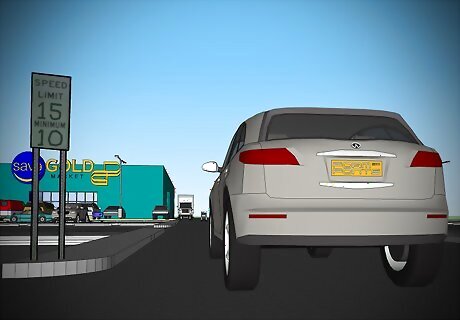
Observe the legal aspects of driving in a parking lot. You are not likely to be pulled over by the police, but there are laws regarding operating a motor vehicle in a public parking lot, just as there are on the highway. Here are some things to watch for. Posted speed limits. Many large parking lots do have posted speed limits or road markings, which are for the safety of pedestrians and other road users, please abide by them.Use Parking Lot Etiquette Step 8Bullet1.jpg One-way signs and markings. In parking lots with diagonal spaces, individual lanes may be one way, most often marked with a directional arrow painted on the pavement at the end of each lane. Even if the lane is not marked, you may be safe to assume the lane is one way if the diagonal spaces are oriented in the same direction on both sides.Use Parking Lot Etiquette Step 8Bullet2.jpg Stop and Yield signs. These serve the same purpose in parking lots they serve on city streets, allowing the right-of-way to a vehicle driving in a certain lane or direction, and should be obeyed.Use Parking Lot Etiquette Step 8Bullet4.jpg Disabled and elderly spaces. Disabled parking spaces are generally clearly marked with signs and special striping, and are wider than regular spaces to accommodate wheelchairs. They are located near disabled ramps, usually very close to the entrance of the shop. If you do not require the use of these spaces, and do not have a permit, park somewhere else as parking there would be an inconvenience to them, and it is illegal in many places.Use Parking Lot Etiquette Step 8Bullet3.jpg Pedestrian crosswalks. These are common near the main entrances and exits of most large businesses, for the safety of pedestrians returning to their cars. They are usually marked with diagonal white or yellow stripes, and often also are marked with a pedestrian crossing or stop sign.Use Parking Lot Etiquette Step 8Bullet5.jpg Indicators/Turn signals. Using indicators gives other road users an idea of what your intentions are, use them in a timely manner to show what you are doing.Use Parking Lot Etiquette Step 8Bullet6.jpg
Making your parking experience safer
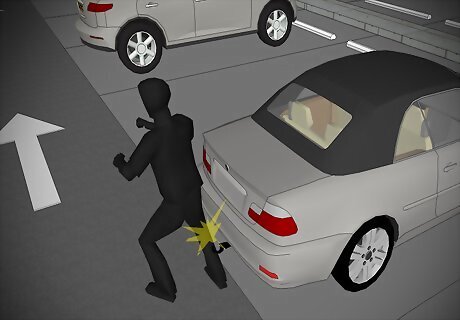
Remove trailer hitch receivers if they hang out of the parking place. These receivers, usually made of heavy steel and often with sharp corners, can be dangerous to inattentive pedestrians trying to walk as close to parked vehicles as possible to give drivers more room.
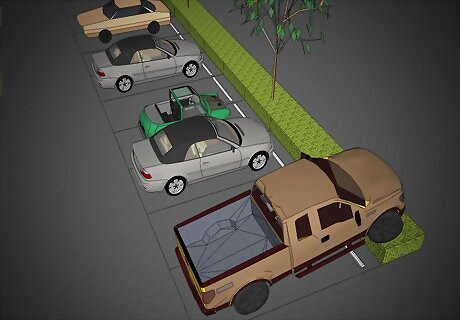
Avoid curb hopping. This is very important where landscaped areas are within the curb boundaries, since jumping the curb may damage plants and irrigation components.
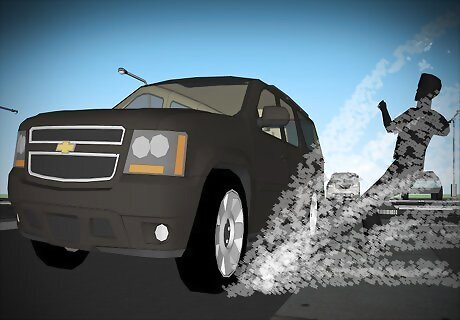
Slow down in the rain. Driving at highway, or even street speeds, in a parking lot filled with puddles of rainwater can inundate a passing pedestrian, or even another driver who is traveling with their window down. It also makes it harder to stop quickly if a child should run out or a wayward cart start rolling across your path.
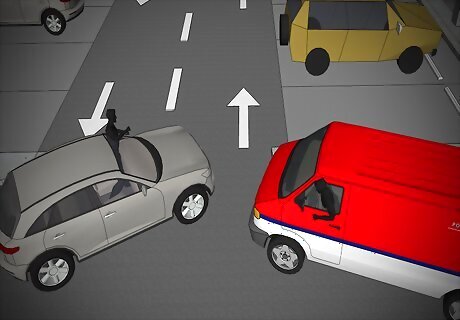
Resist temptation to blow the horn (or give the finger) to other drivers. You may feel like they were discourteous, but showing grace, rather than anger, shows more class and prevents reciprocal aggression. See How to Release Anger and How to Respond to a Road Raged Driver.
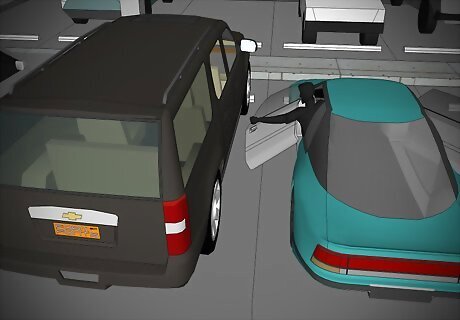
When parking in a spot and opening doors, be aware of vehicle on each side of you as to not hit the doors and producing dings, scratches or dents, as these can be very costly to repair.
Supervising children in the car park

Never let small children push the shopping cart for you. Not only is it dangerous in busy parking lots, but a loaded shopping cart in a hilly parking lot can end up crashing into and damaging someone's vehicle. Children should also not be allowed to ride the cart back to the vehicle, with the exception of small toddlers or infants riding in the special seat built into many shopping carts, while a parent has both hands on the handle. Do not allow children to stand on the front of the bottom of the cart, as the child could fall.
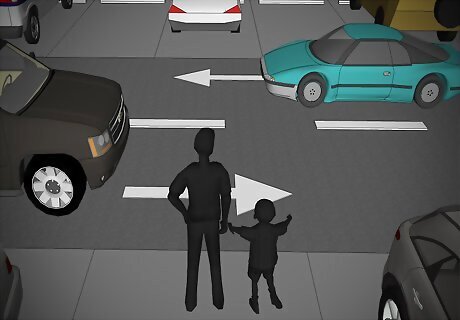
Keep children under control walking through parking lots. This will help protect them from inattentive drivers, and make the parking lot safer for everyone.
Business parking lots
Be mindful of any specific parking rules your business office may have. For example, there are often employee lots reserved for certain employees or for those who have served a set length of employment as a reward. Know about these cordoned off parks before selecting a spot in which to leave your vehicle for the business day.
Once selecting a spot, make sure to follow all the rules explained in previous sections. This includes speed, distance, and size of parking space before pulling your vehicle into the selected spot. Be aware that in many business parking lots, parking is not the only activity, but there may be a lot of loads being unloaded and packed, in tall vehicles, that can make it more congested and difficult to see your way clear. This makes it even more important to be very careful and follow the parking lot instructions, for your own safety and for the safety of other workers.
Be particularly mindful of parking arrows designating traffic within the lot a certain direction and no parking zones. Going the wrong way causes accidents, while parking in no parking zones can impact loading and packing operations. It may also mean that your car registration is called out over the intercom and you have to sheepishly leave a meeting to move your car. For parking lots with two entrances/exits, one is usually the entrance and one is the exit. Pay close attention to this, as various lots will have selected parking spots along the entrance. When parking in these spots, pull all the way in, with the direction of traffic.
General parking lot etiquette
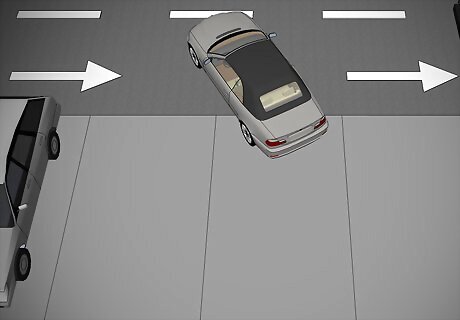
Keep the parking lot clean. Nobody likes to see trash blowing around the parking lot as they walk to and from the business, so stow the empty fast food wrappers, ashtray contents, drink bottles, and other potential debris until you have access to a waste receptacle. This should also apply to sales fliers and business literature, including that which is conveniently posted underneath windshield wiper blades while you are searching for your latest bargain.
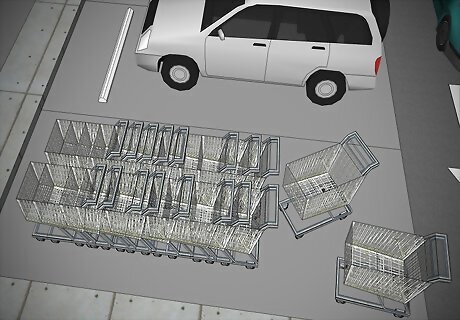
Park shopping carts, dollies, and baskets in designated areas. Many large stores have cart corrals for shopping carts when the customer is finished unloading them. Putting the carts in these locations will make it less likely the cart you were using will end up denting someone else's car.

















Comments
0 comment